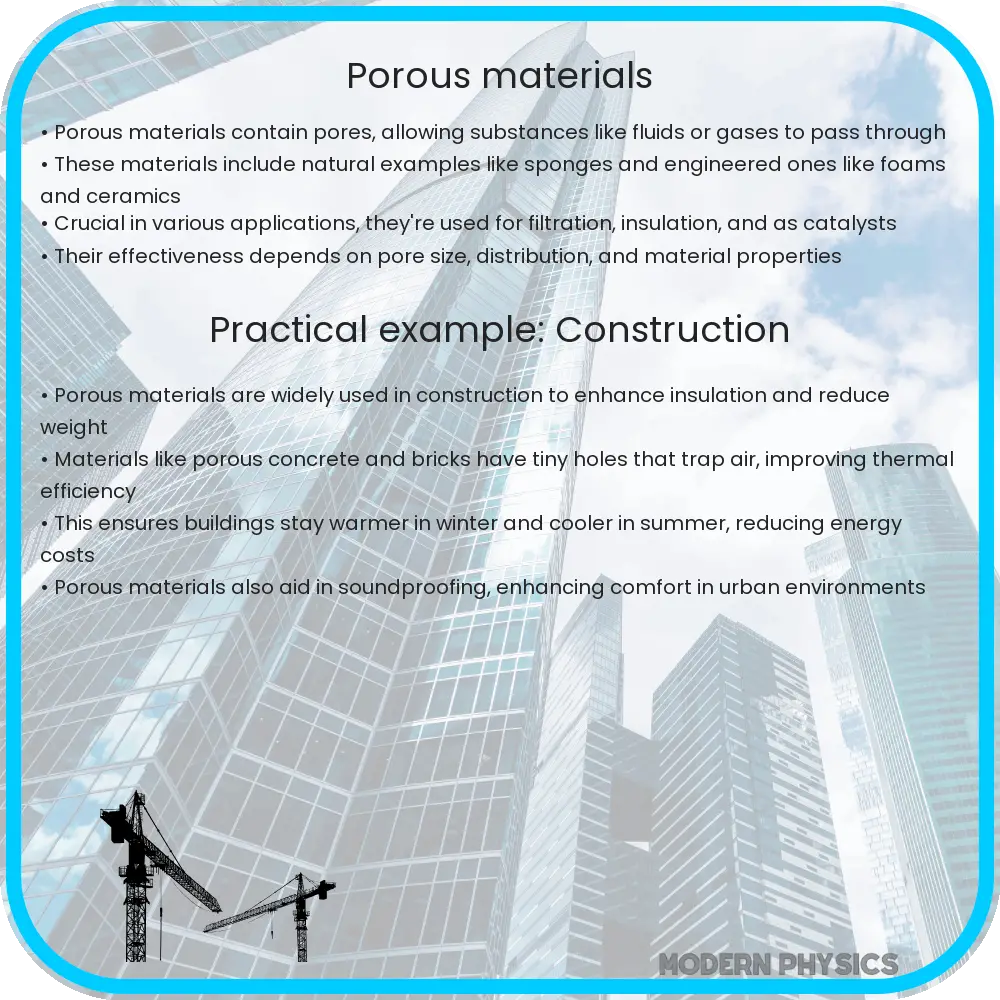Understand the structure, classification, and diverse applications of porous materials across various industries.

Introduction to Porous Materials
Porous materials, characterized by their high porosity and specific surface area, play a crucial role in various applications across multiple industries. These materials are defined by the presence of voids, or pores, that are interspersed between solid material. The characteristics of these pores, such as size, shape, and distribution, importantly influence the material’s properties and uses.
Characteristics and Classification of Porous Materials
The main feature of porous materials is the network of pores that can either be open, connecting to the surface, or closed within the structure. This unique structure allows materials to perform specific roles such as filtering, insulation, or as catalysts. Porous materials are broadly categorized based on their pore size:
- Micro-porous materials: Pore diameters less than 2 nm.
- Meso-porous materials: Pore diameters between 2 nm and 50 nm.
- Macro-porous materials: Pore diameters greater than 50 nm.
These categories help in defining the applicability of porous materials in different contexts, such as in molecular sieves, ion exchange, or enzymatic facilitation where micro-porous materials are often utilized due to their ability to facilitate reactions at the molecular level.
Versatility of Porous Materials
One of the most distinguishing attributes of porous materials is their versatility. They can be made from various base materials including polymers, ceramics, and metals, which allows them to be used in a myriad of applications. For instance, porous ceramics are widely used in medical applications as bone substitutes due to their biocompatibility and structural similarity to bone.
Porous polymers, on the other hand, are used extensively in water purification systems due to their ability to filter and remove contaminants efficiently. These polymers can be engineered to target specific pollutants, thus enhancing the purification process.
Durability and Sustainability
The structural integrity of porous materials contributes significantly to their durability. For instance, porous materials used in construction, such as certain types of aerated concrete, offer not only light weight and good insulation properties but also significant durability. Their pore structure can help in absorbing and dissipating energy, thus providing enhanced resistance against impacts and stresses.
Sustainability is another key asset of porous materials. Many of these materials can be synthesized from recycled substances or natural resources which reduces environmental impact. Additionally, their energy efficiency, primarily in insulation applications, plays a pivotal role in reducing energy consumption in residential and commercial buildings.
Applications in Modern Technology
Porous materials are integral to the advancement of modern technology, particularly in the fields of energy storage and electronics. For example, porous carbon materials are essential in the manufacture of high-performance lithium-ion batteries. Their porous nature allows for increased surface area, which improves the rate of ion transfer, enhancing battery efficiency and capacity.
Similarly, in electronics, porous silicon is used in the production of semiconductor devices. Its ability to form an efficient, thermally insulating layer makes it ideal for protecting delicate components while maintaining functionality.
Challenges and Future Prospects
Despite their numerous advantages, porous materials face certain challenges that need addressing to broaden their applications. One significant issue is the structural weakness in some forms of porous materials, which can lead to degradation under mechanical stress or over prolonged use. Advanced research is focused on improving the mechanical strength of these materials while maintaining their unique properties.
Future prospects for porous materials are promising, especially with ongoing advancements in nano-technology and materials science. Researchers are exploring more sustainable production methods and innovative uses in areas like carbon capture, water desalination, and even in aerospace for lightweight yet strong components.
Conclusion
Porous materials, with their unique and versatile properties, continue to be a cornerstone in the advancement of various industrial applications. From improving energy efficiency and environmental sustainability to enhancing modern technology, the role of these materials is indispensable. As challenges such as durability and mechanical strength are addressed, the potential for new applications appears limitless. With ongoing research and development, the future of porous materials is not only promising but is poised to revolutionize numerous sectors with innovative solutions.
